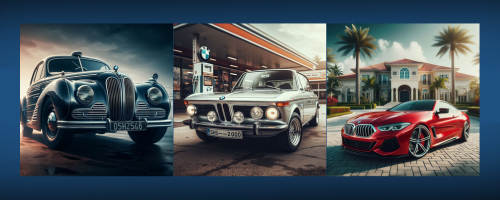BMW’s rich history and innovative spirit have made it a leader in the automotive industry. These lesser-known facts highlight the company’s journey and its contributions to both aviation and automotive engineering.
1. BMW’s Origins in Aviation
BMW, which stands for Bayerische Motoren Werke (Bavarian Motor Works), originally started as an aircraft engine manufacturer in 1916. Their first product was a straight-six engine, which was highly regarded during World War I.
2. The Iconic Kidney Grille
The kidney grille, a signature design element of BMW cars, first appeared in 1933 on the BMW 303 model. Despite recent controversies over its size, the kidney grille has been a staple of BMW design for decades.
3. The First Electric Car
BMW’s first electric car, the 1602 Elektro-Antrieb, was introduced in 1972. Although it had a limited range of 37 miles, it was showcased at the 1972 Olympic Games in Munich, marking an important step in BMW’s electric vehicle development.
4. The Quiet M5 Engine
The engine of the BMW M5 is so quiet that the company plays artificial engine noises through the car’s speakers to remind drivers of the car’s performance.
5. The Four-Cylinder Headquarters
BMW’s headquarters in Munich is designed to resemble a four-cylinder engine, paying homage to the company’s history and engineering prowess.
6. The Red Baron’s Praise
The legendary World War I fighter pilot, the Red Baron, praised BMW’s aircraft engines, calling them the “greatest engine.” This endorsement significantly boosted BMW’s reputation in its early years.
7. Diversification During Hard Times
After World War II, BMW was banned from producing motor vehicles and aircraft. To survive, the company diversified into making pots, pans, and pedal bikes.
8. The Treaty of Versailles Impact
The Treaty of Versailles forced BMW to shift from making aircraft engines to motorcycles and eventually automobiles. This pivotal moment in history led to the BMW we know today.
9. The Lavish Airplane Interiors
While BMW no longer manufactures airplane engines, they still design luxurious airplane interiors, including those for Singapore Airlines, known for offering one of the most lavish flying experiences.
10. The 1,500-Horsepower Engine
In 1982, BMW’s turbocharged M12 engine, used in Formula 1 cars, was capable of producing an astonishing 1,500 horsepower in maximum boost mode. This engine powered Nelson Piquet to the championship title in 1983.
